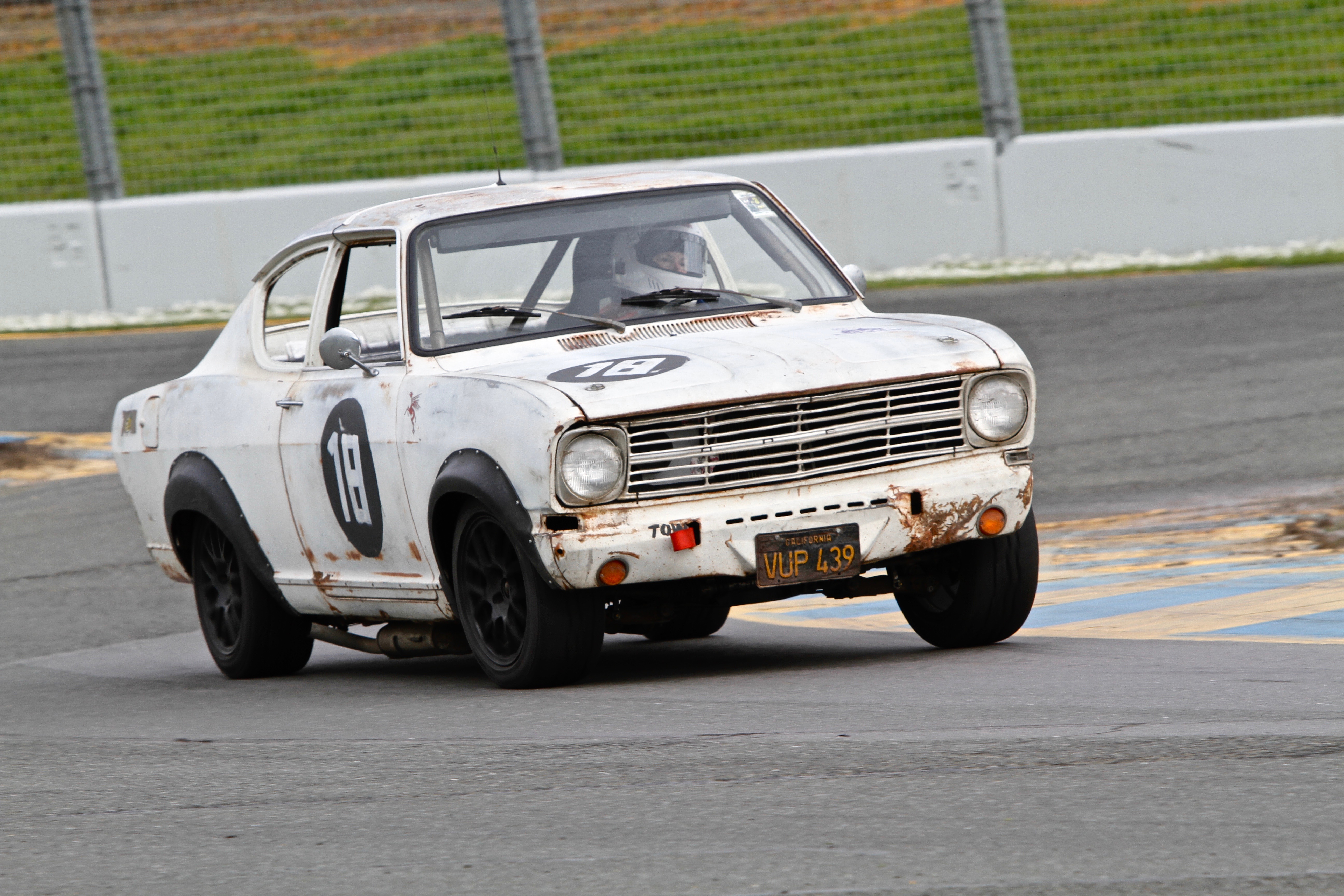
Cheap Race Car Build: Winning Lemons with 55 Horsepower
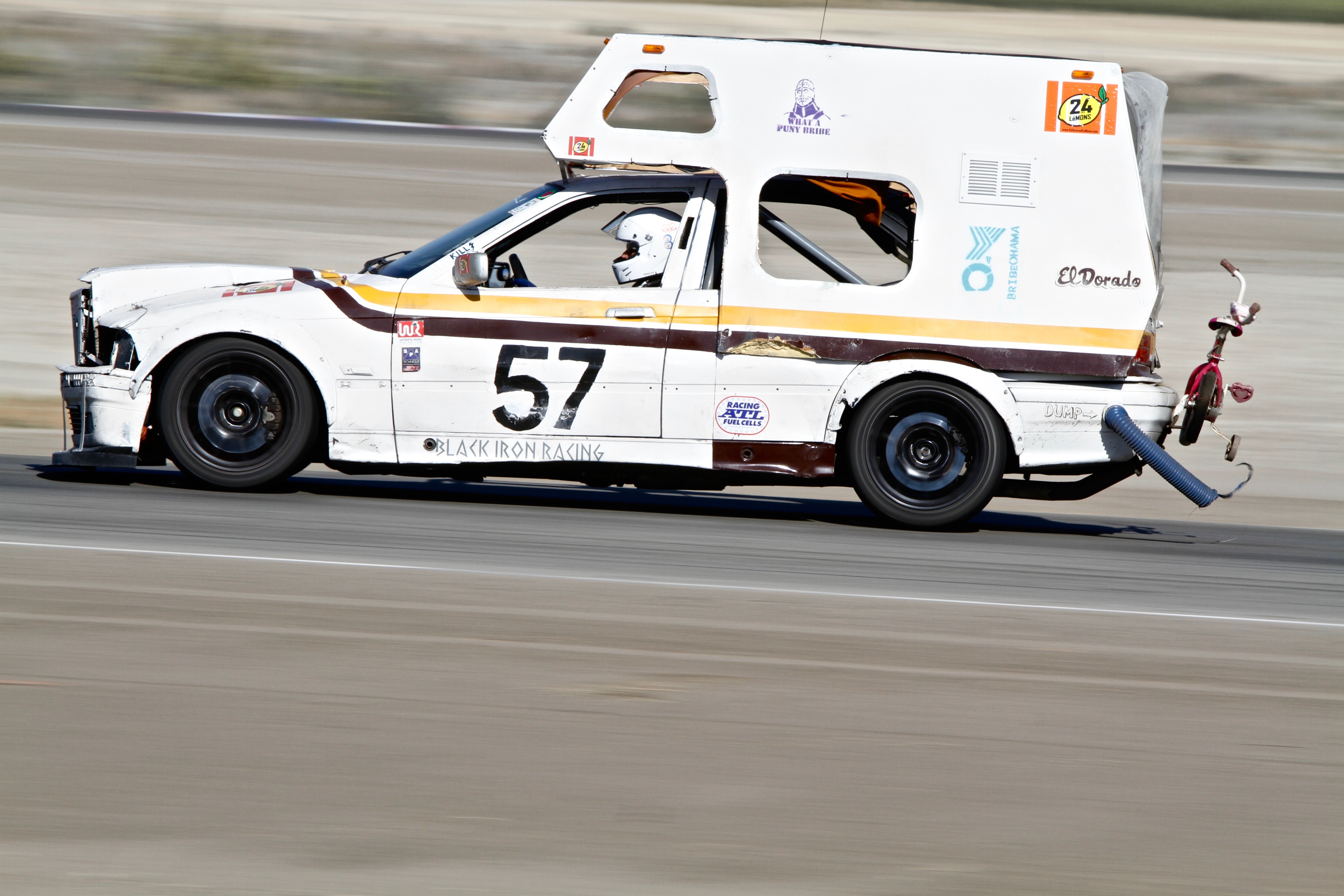 The typical cheap race car build focuses on going fast on a budget. But this is the 24 Hours of Lemons, where speed is secondary to endurance, and overall finishing position is secondary to racing a weird car. So, when Black Iron Racing decided to take a break from trying to win a Lemons race overall in their V8-swapped BMW camper (seen above), they didn’t lose any of their competitive juices–in fact, they set their sights on even more prestigious prizes.
The typical cheap race car build focuses on going fast on a budget. But this is the 24 Hours of Lemons, where speed is secondary to endurance, and overall finishing position is secondary to racing a weird car. So, when Black Iron Racing decided to take a break from trying to win a Lemons race overall in their V8-swapped BMW camper (seen above), they didn’t lose any of their competitive juices–in fact, they set their sights on even more prestigious prizes.
Lemons racing has three different classes, which were originally (and confusingly) described as Prayer of Winning, Prayer of Finishing, and No Prayer of Finishing. This was later simplified to Good, Bad, and Ugly, and finally to simply A, B, and C. The classes are assigned quickly and arbitrarily during BS inspection–essentially, if your car is good and potentially fast, you’re in Class A. If your car is decent but probably not fast, it’s Class B. And if your car is staunchly anti-performance or utterly terrible, it gets Class C. Prize money is doled out accordingly: The Class C winner gets the most, at $600, with Class B and Class A receiving $500 and $400 respectively. That’s Lemons logic: Worse is Better.
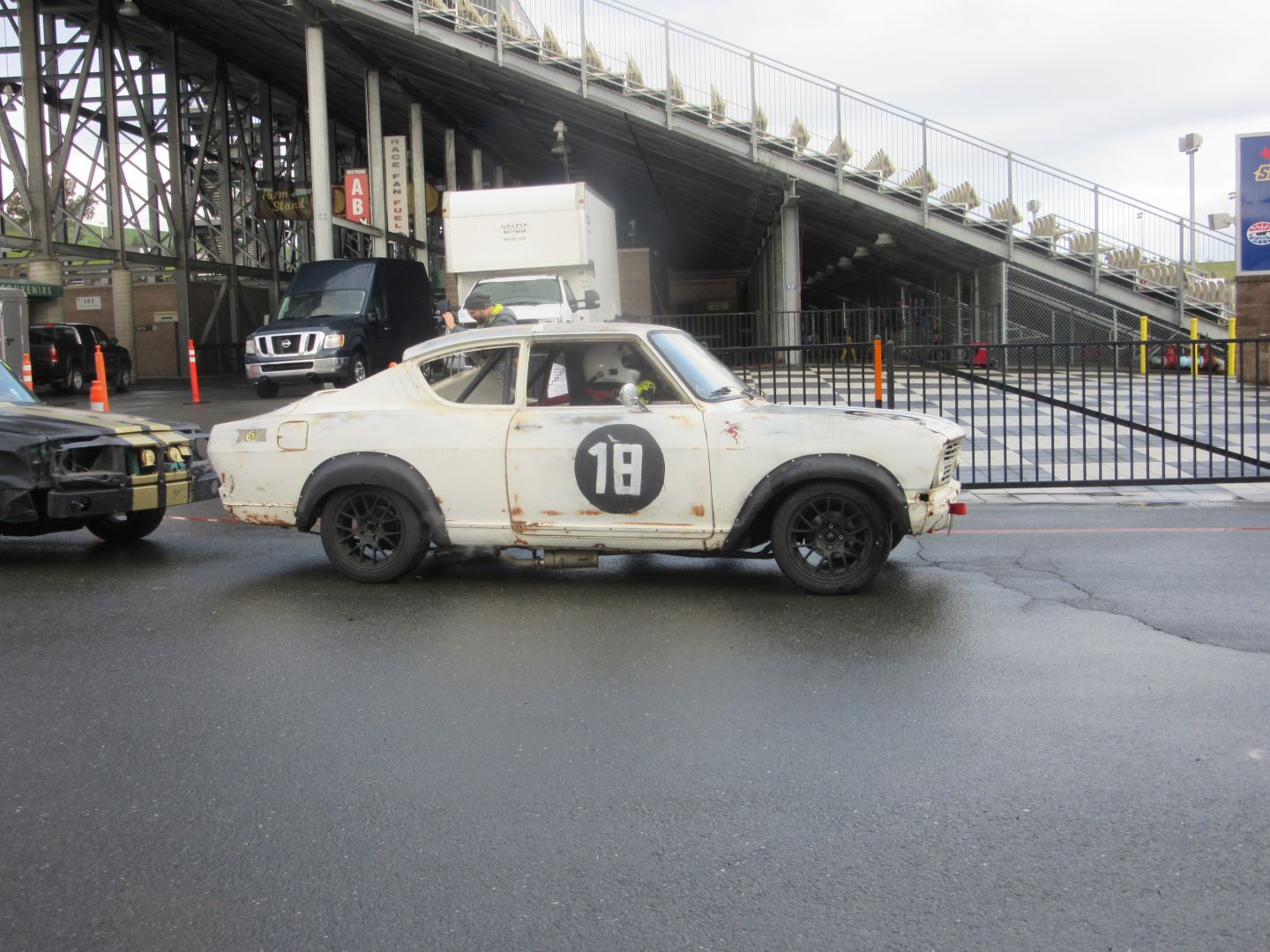
On top of the class prizes is the top award of them all, the Index of Effluency. That comes with $601 in prize money and a free entry into the next race. (The award is a take on the old Index of Efficiency at Le Mans: The Index of Efficiency used a complex formula to reward fuel-sipping entries. The Index of Effluency is based on an unscientific measure of which team achieves the most with the worst car.)
If there is such a thing as prize-motivated logic in Lemons, making a run at Class C and/or the Index of Effluency (winning both isn’t mutually exclusive) is one of the closest things to it. That was the primary thinking when Black Iron decided to temporarily shelve their speedy BMW and campaign something (much) slower. There were better potential prizes and (given the general flakiness of Class C competition and the subjectiveness of IOE selection) more ways to win.
The next question was, what to bring? Taking speed off the table makes a cheap race car build a lot easier, and Lemons’ general appreciation of weird old iron began to steer the team in the direction of something old and relatively unmodified. Team member Alex Vendler, a veteran of California vintage car rallies, was no stranger to this arena. When an ex-Lemons Opel Kadett B (Kiemen Coupe, for the Opel nerds) came up for sale, snapping it up was for him a no-brainer. He’d even campaigned a similar Kadett years prior on the California Melee vintage rally.

Alex Vendler’s Kadett (far right) on the 2007 California Melee.
The Kadett, sporting a tough profile not unlike a shrunken-down fastback muscle car, did not in fact have the grunt to match its looks. “Fifty-five horsepower, baby!” Vendler exclaims, despite various online sources actually quoting fifty-four ponies for the modest 1.1-liter pushrod four. The team ignored temptations to apply any hop-up mods, as such improvements risked a promotion into a higher class as well as reliability. “I don’t think it makes enough power to hurt itself,” Vendler says, with surprising confidence. In the end, the only racing concessions made (aside from the required Lemons safety gear) were a modern radiator, an aftermarket oil cooler, and fender flares necessitated by larger (and more easily sourced) tire sizes.
 Whenever a vintage car shows up in Lemons, there are mouth-frothing cries of Y U RUNE KLASSIK? But, the racetrack is a perfectly noble arena for these machines, most of which are a long way removed from an invitation to Pebble Beach. A cheap race car build is a lot easier on the wallet than even a middle-of-the-road restoration, and racing arguably provides a lot more enjoyment of the vehicle. There are old cars rotting in fields and junkyards all over the place, and if one got plucked out to race, then that’s as much a rescue as anything else.
Whenever a vintage car shows up in Lemons, there are mouth-frothing cries of Y U RUNE KLASSIK? But, the racetrack is a perfectly noble arena for these machines, most of which are a long way removed from an invitation to Pebble Beach. A cheap race car build is a lot easier on the wallet than even a middle-of-the-road restoration, and racing arguably provides a lot more enjoyment of the vehicle. There are old cars rotting in fields and junkyards all over the place, and if one got plucked out to race, then that’s as much a rescue as anything else.
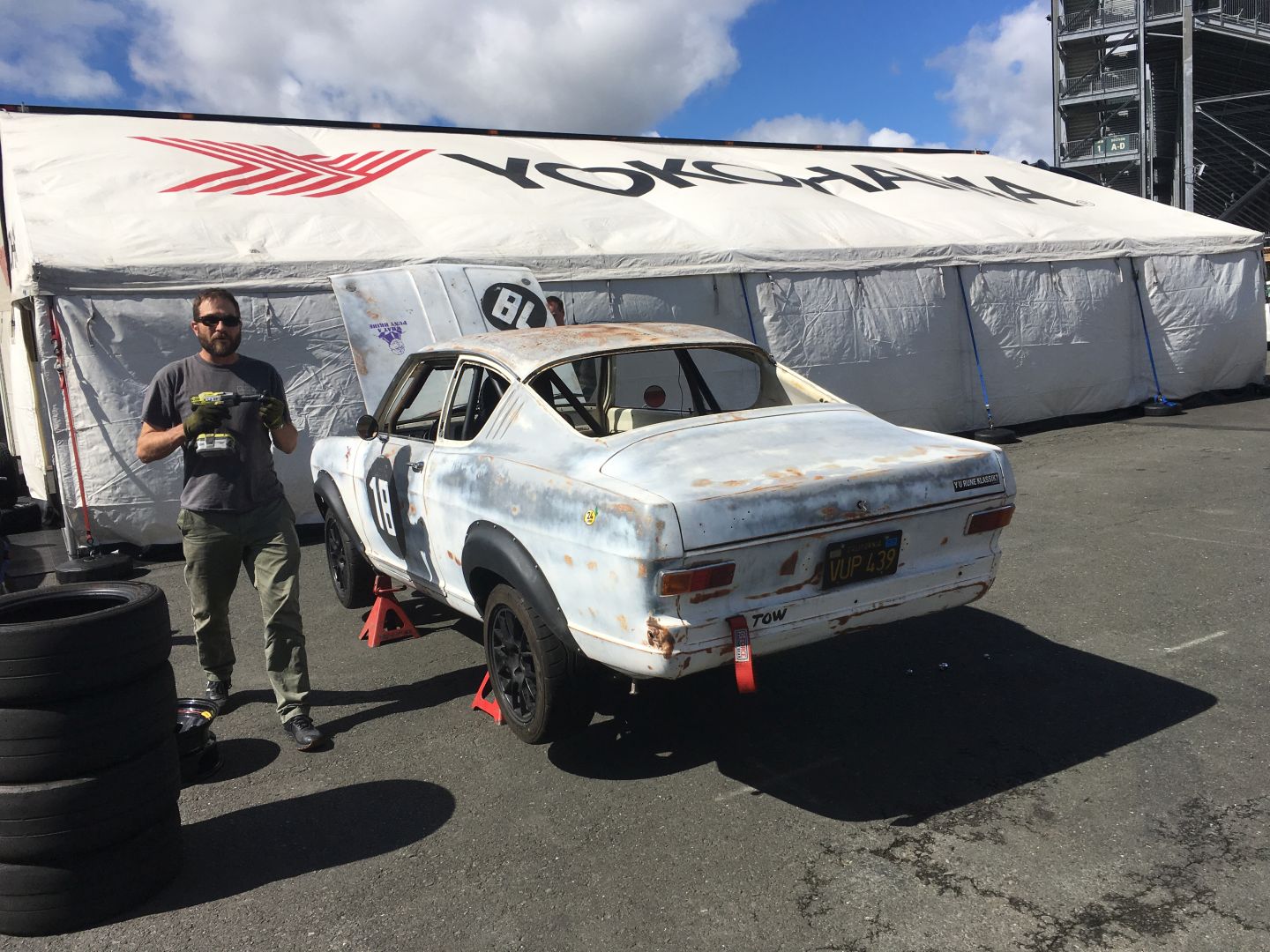
Sears Pointless at Sonoma Raceway was Black Iron’s first outing with the Opel (that they had dubbed “Opile”), and a typically large California field posed a daunting challenge. But the team’s strategy of running long, clean stints (really a winning approach for Lemons cars of all speeds) quickly put them into contention for the Class C win.
Unfortunately, the emergent Class leader was the decidedly faster first-gen CRV of RUN-CRV. Being a somewhat modern Honda, it was less likely to relinquish a lead due to reliability problems. The CRV’s superior performance even led some Black Iron team members to question its placement in Class C in the first place; the counterpoint to that argument would be that the Honda was, in fact, a mostly stock automatic family hauler from the ’90s.
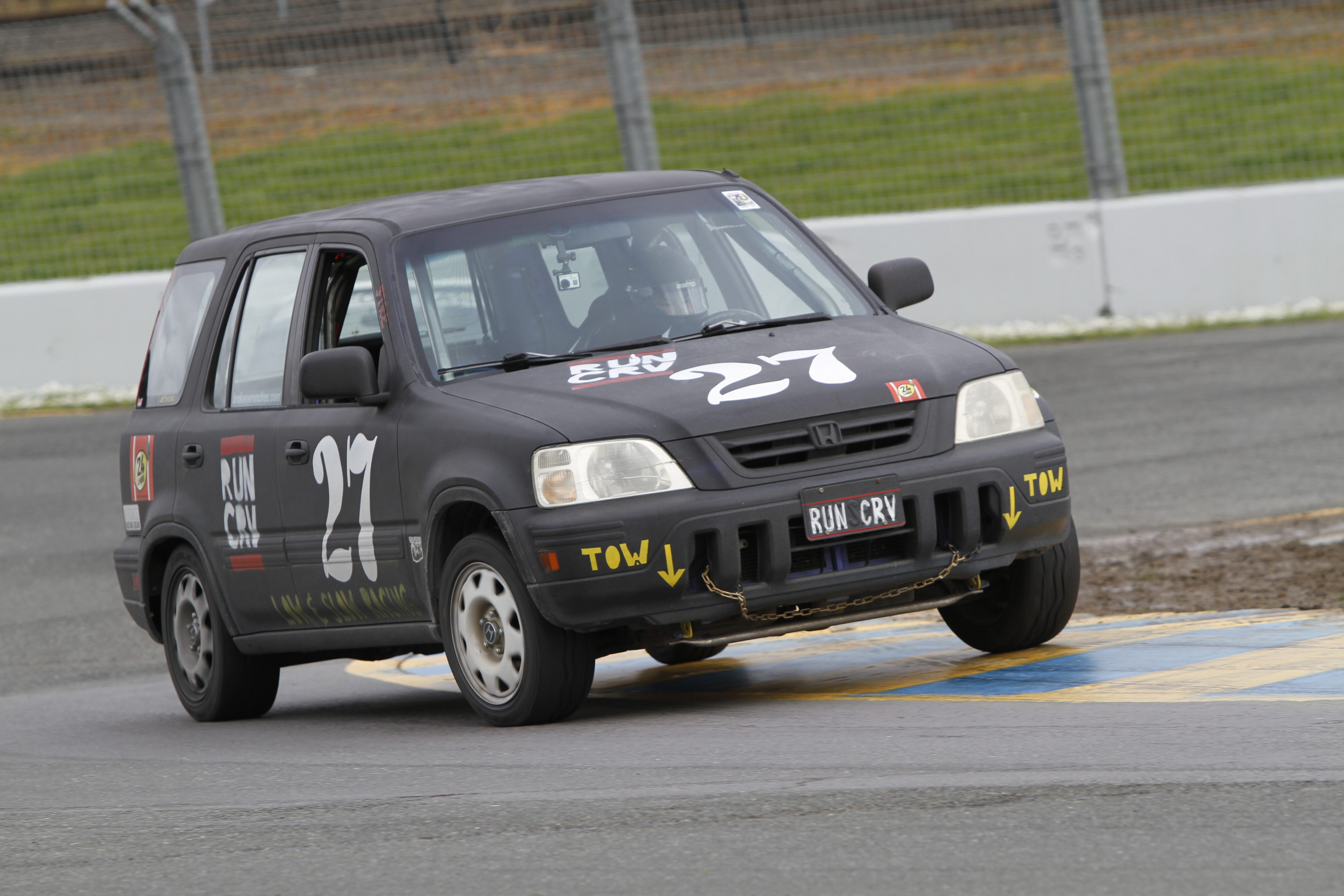
With the allotted race time dwindling down on Sunday, it became increasingly clear that no one would catch the CRV (it would go on to finish an excellent 36th out of 129 and win Class C going away). Still, other prizes, most notably the IOE, remained in play for the Opile.

One of Black Iron’s biggest challenges came from veteran Lemons competitors Hella Shitty Racing and their new Bitter SC entry (we can wait while you google “WTF is a Bitter SC“). In the waning moments of the race, the Opel and the Bitter were no more than a few laps apart. Although there’s no concrete formula for determining the IOE, a general feeling of awarding the IOE to whatever finished highest between the two obscure Germans began to emerge amongst the Lemons staff. When the checkered flag fell, the Bitter finished in 59th position overall, having completed 255 laps, or about 630 race miles. But the little Opel had already crossed the line several minutes before, with 258 laps, 635 miles, and in 57th position. The IOE was theirs.

Black Iron’s V8 BMW combines the tricky engineering of an engine swap combined with the creativity, fabrication skills, and junkyard savvy needed to pull that off within a Lemons budget. They actually did pull off the conversion within the letter of Lemons budget law, but the amount of time working out that solution was significant. In contrast, the Opel required just the short list of mods listed above and a team of level-headed drivers, and it was able to capture Lemons’ grand prize in a very competitive field. A cheap race car build doesn’t get much more successful than that.
The 24 Hours of Lemons races next at NOLA Motorsports Park in New Orleans, Louisiana, on March 30-31. You can find information on that race and on the rest of the 2019 season schedule here.
